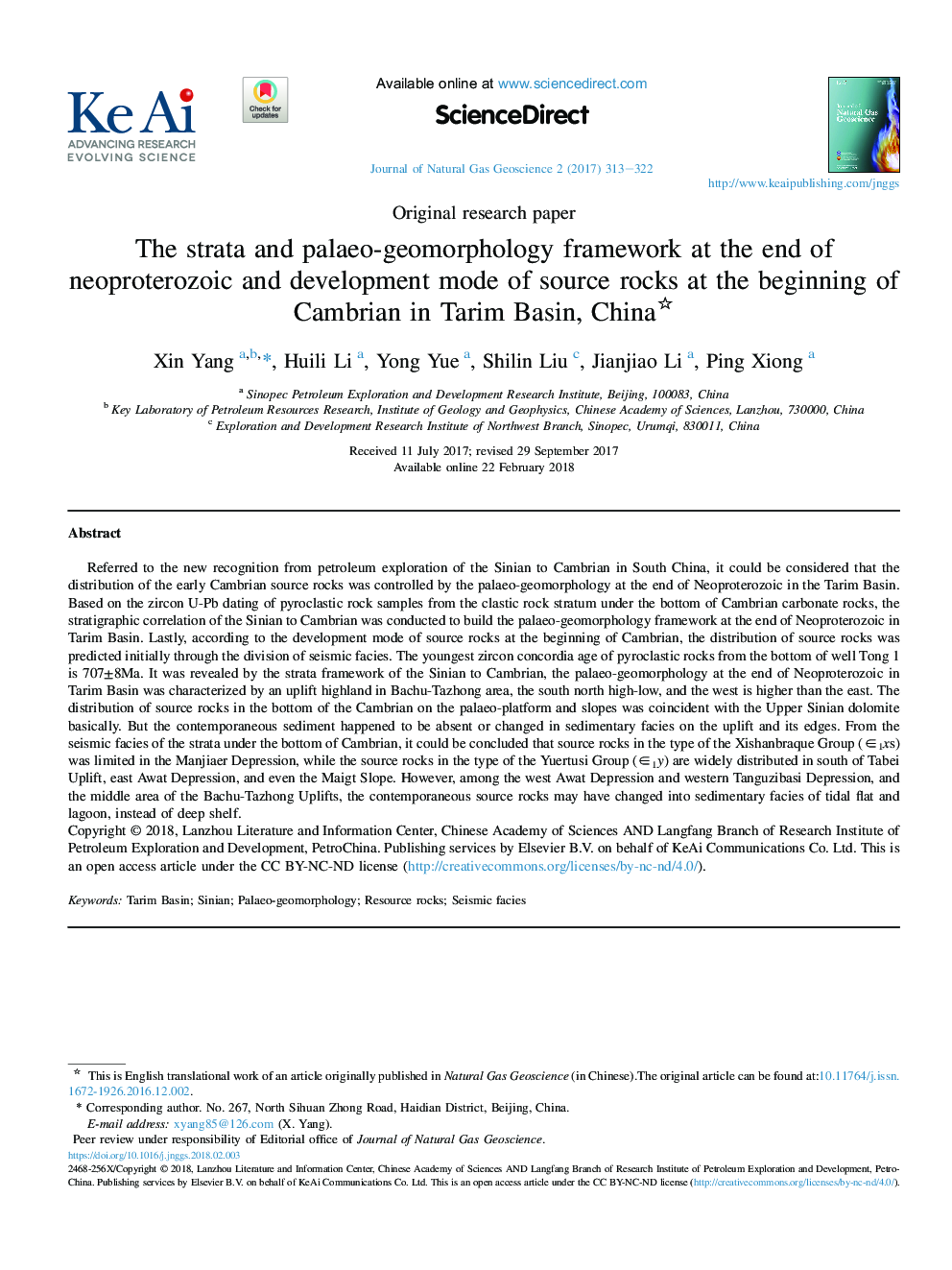| کد مقاله | کد نشریه | سال انتشار | مقاله انگلیسی | نسخه تمام متن |
|---|---|---|---|---|
| 8124184 | 1522740 | 2017 | 10 صفحه PDF | دانلود رایگان |
عنوان انگلیسی مقاله ISI
The strata and palaeo-geomorphology framework at the end of neoproterozoic and development mode of source rocks at the beginning of Cambrian in Tarim Basin, China
دانلود مقاله + سفارش ترجمه
دانلود مقاله ISI انگلیسی
رایگان برای ایرانیان
موضوعات مرتبط
مهندسی و علوم پایه
علوم زمین و سیارات
ژئوشیمی و پترولوژی
پیش نمایش صفحه اول مقاله

چکیده انگلیسی
Referred to the new recognition from petroleum exploration of the Sinian to Cambrian in South China, it could be considered that the distribution of the early Cambrian source rocks was controlled by the palaeo-geomorphology at the end of Neoproterozoic in the Tarim Basin. Based on the zircon U-Pb dating of pyroclastic rock samples from the clastic rock stratum under the bottom of Cambrian carbonate rocks, the stratigraphic correlation of the Sinian to Cambrian was conducted to build the palaeo-geomorphology framework at the end of Neoproterozoic in Tarim Basin. Lastly, according to the development mode of source rocks at the beginning of Cambrian, the distribution of source rocks was predicted initially through the division of seismic facies. The youngest zircon concordia age of pyroclastic rocks from the bottom of well Tong 1 is 707±8Ma. It was revealed by the strata framework of the Sinian to Cambrian, the palaeo-geomorphology at the end of Neoproterozoic in Tarim Basin was characterized by an uplift highland in Bachu-Tazhong area, the south north high-low, and the west is higher than the east. The distribution of source rocks in the bottom of the Cambrian on the palaeo-platform and slopes was coincident with the Upper Sinian dolomite basically. But the contemporaneous sediment happened to be absent or changed in sedimentary facies on the uplift and its edges. From the seismic facies of the strata under the bottom of Cambrian, it could be concluded that source rocks in the type of the Xishanbraque Group (â1xs) was limited in the Manjiaer Depression, while the source rocks in the type of the Yuertusi Group (â1y) are widely distributed in south of Tabei Uplift, east Awat Depression, and even the Maigt Slope. However, among the west Awat Depression and western Tanguzibasi Depression, and the middle area of the Bachu-Tazhong Uplifts, the contemporaneous source rocks may have changed into sedimentary facies of tidal flat and lagoon, instead of deep shelf.
ناشر
Database: Elsevier - ScienceDirect (ساینس دایرکت)
Journal: Journal of Natural Gas Geoscience - Volume 2, Issues 5â6, December 2017, Pages 313-322
Journal: Journal of Natural Gas Geoscience - Volume 2, Issues 5â6, December 2017, Pages 313-322
نویسندگان
Xin Yang, Huili Li, Yong Yue, Shilin Liu, Jianjiao Li, Ping Xiong,